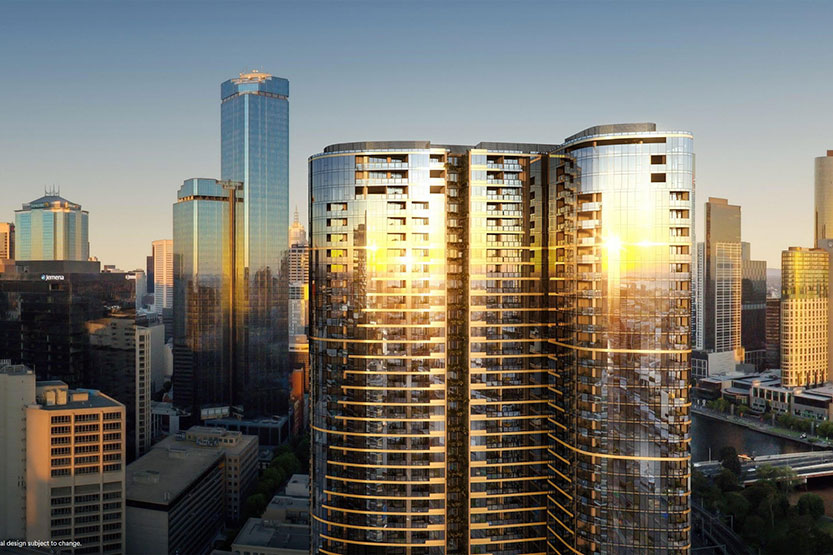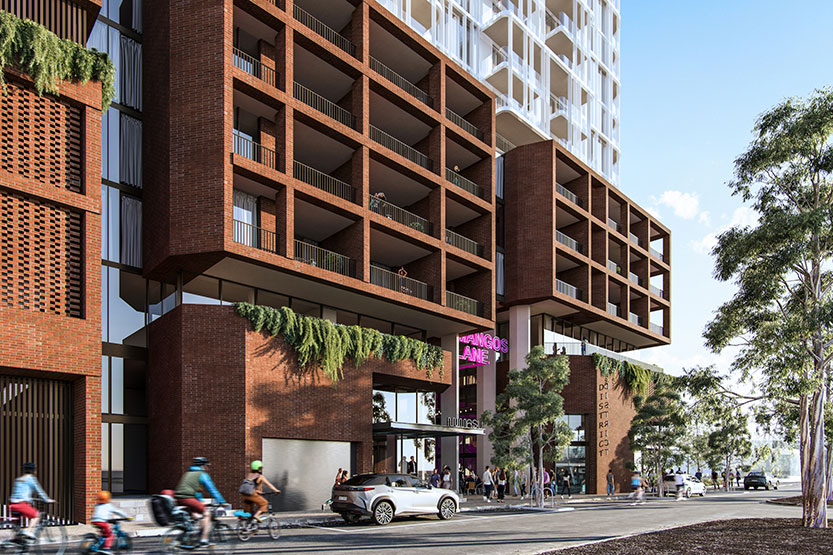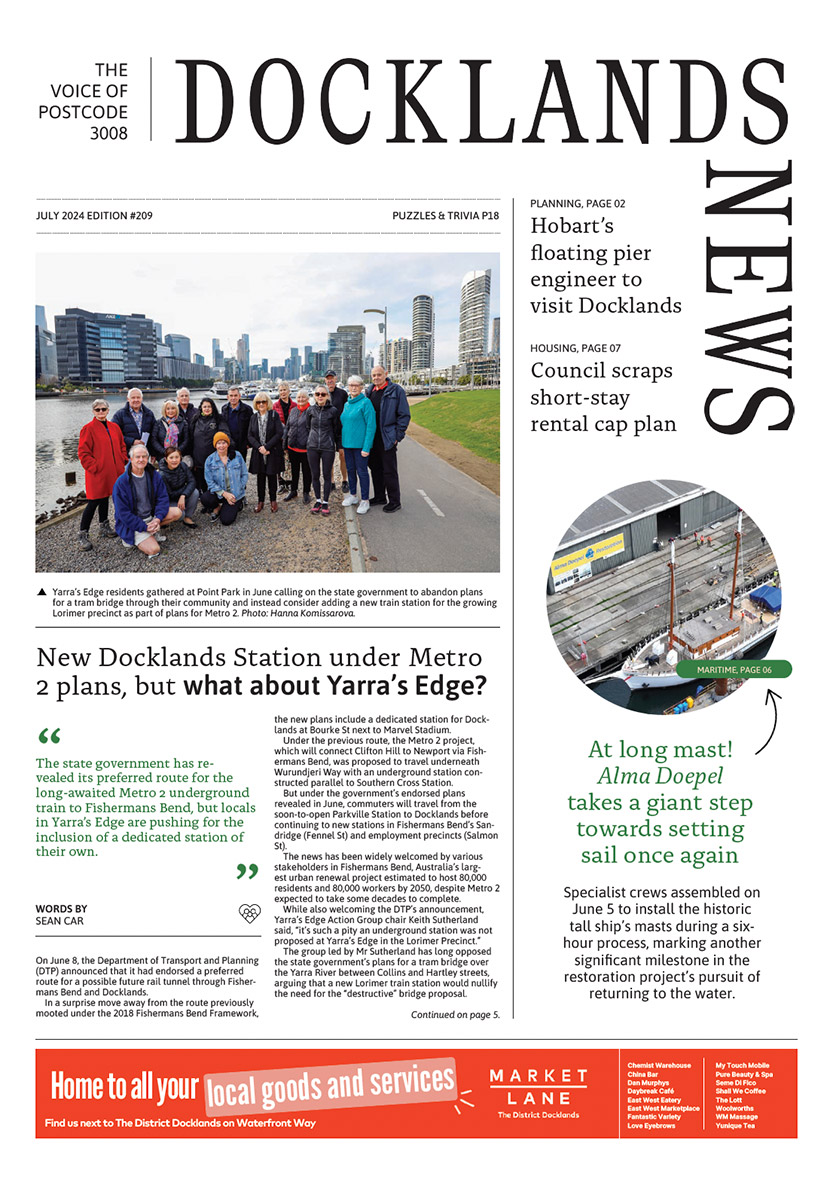Docklands emerging as a build-to-rent capital, but expert says it won’t help housing crisis
Two more build-to-rent projects were announced in July, however an expert warns that any relief they provide to Australia’s housing crisis is negligible.
Two large-scale “build-to-rent” projects in Docklands were announced by developers in July, as the local area firms as a hotspot for Australia’s burgeoning property model.
Developer AsheMorgan unveiled plans for a 900-apartment build-to-rent (BTR) project next-door to Docklands Primary School, before Lendlease — alongside Japan’s Daiwa House Group — announced they were partnering on a $650m BTR project at Melbourne Quarter, opposite Southern Cross Station.
It follows Lendlease’s unveiling of plans earlier this year of a 24-storey Victoria Harbour tower also designated as BTR — a residential development in which dwellings are retained by the developer and leased out rather than sold.
It’s a scheme said to benefit tenants by offering more security, included amenities and flexible leases.
One of the precinct’s first BTR projects — dual 28- and 30-storey towers at 685-691 Latrobe Street, adjacent to Marvel Stadium — was on its way to completion.
AsheMorgan’s project, dubbed “District Living”, was set to be one of Australia’s largest BTR developments, which they said would “cater to young families within the Docklands Primary catchment”.
It was set to feature private outdoor spaces, which would include a dog park.
Development director Mat Stoddart said Melbourne faced an undersupply of housing over the coming four years, with research suggesting there would be an undersupply of around 10,000 residences in 2026 alone.
“Couple this with a tight rental market and over 67 per cent of the population in Docklands already renting, it is an area ripe for a well-designed BTR development,” he said.
More than 50 per cent of residents within Docklands are aged between 20 and 40 and almost 60 per cent are working as professionals or managers, making them the primary target market for BTR.
“Armed with this knowledge, we have delved into understanding more deeply how people want to live, which has led us to be much more generous and considerate in our design approach for these apartments, with a portion specifically designed with families in mind.”
The plans were before Planning Minister Sonya Kilkenny and if approved, was scheduled to begin construction in the second half of 2024.
The Lendlease/Daiwa development would similarly offer a “tenure-secure alternative to the traditional apartment rental market”, with 797 residences in a mix of studio, one-, two- and three-bedroom apartments spanning 45 levels.
BTR has been promoted by some as a way to help Australia’s housing crisis and provide both steady income for investors and a next-best option to ownership for renters.
 Lendlease's project at Melbourne Quarter.
Lendlease's project at Melbourne Quarter.
However, Robert Pradolin, former general manager at Frasers Property Australia and now founder of Housing All Australians, said while any form of supply should be welcomed, the model was almost exclusively targeted at higher income earners.
“People sometimes have this misconception that build-to-rent is affordable housing. It is definitely not,” he told Docklands News.
“All forms of supply are a positive contribution to our housing crisis. But the build-to-rent sector is a fairly niche market, it is not affordable housing — unless as part of negotiations the [relevant local] council has negotiated an affordable housing element in the build-to-rent option. Any addition to supply will help put a downward pressure on pricing, but it is not a solution to Australia’s housing crisis, especially affordable housing.”
Research by Oxford Economics Australia released in June revealed that the pipeline of BTR across Australia “continues to swell”, with Melbourne possessing 41 per cent of projects to come, “clustered heavily on the CBD fringe”.
It predicted BTR would overtake all other property asset classes for new development by 2030.
Mr Pradolin predicted this would create an excess of housing stock, but that would not be a bad thing.
This is always a bit of a race; everyone is trying to target the same target market which is the high income earner. And I think probably at some point, there’s going to be an oversupply in that sector. But again, that’s not a bad thing because then rents will come down.
While the BTR pipeline might be booming compared to its low base, he said it remained too small a player to impact the here-and-now.
“You’ve got to see build-to-rent in the context of the entire housing continuum — it is just a niche market. Because the build-to-sell [market] has fallen off a cliff for a whole range of reasons, the only sector that seems to get some traction is the build-to-rent market.”
“Developers are quite simple people, they tend to follow the crowd a bit even though they do some research. I think it’s the only game in town at the moment, other than affordable housing, but affordable housing isn’t viable without a subsidy. So, it’s a bit of a tricky spot for a whole range of developers.” •

Neighbourhood Watch and RACV launch apartment crime prevention program










 Download the Latest Edition
Download the Latest Edition